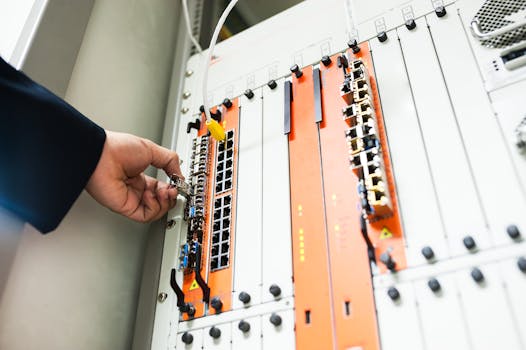
Bridging the Digital Divide: How African Fiber Companies are Transforming Connectivity
African Fiber Companies and the Digital Divide
Bridging the digital divide is a critical step in promoting economic growth, improving healthcare, and enhancing education in Africa. The digital divide refers to the disparity in access to information and communication technologies (ICTs) between different regions, countries, and communities. In Africa, the digital divide is particularly pronounced, with many rural and underserved areas lacking access to basic internet connectivity. However, African fiber companies are working to change this narrative by expanding fiber optic networks and increasing internet access across the continent.
The focus keyword Bridging the Digital Divide is a term used to describe the efforts being made to increase access to information and communication technologies (ICTs) in underserved communities. African fiber companies are at the forefront of this effort, using fiber optic technology to connect more people to the internet and promote digital inclusion.
One of the main challenges faced by African fiber companies is the lack of infrastructure in rural and underserved areas. Many of these areas lack the basic infrastructure needed to support fiber optic networks, such as roads, electricity, and telecommunications towers. However, African fiber companies are finding innovative solutions to these challenges, such as using alternative forms of energy, like solar power, and partnering with local communities to build and maintain infrastructure.
The Impact of Fiber Optic Networks on African Communities
The impact of fiber optic networks on African communities cannot be overstated. Fiber optic networks have the potential to transform the way people live, work, and communicate in Africa. With fiber optic internet, people can access a wide range of online services, including education, healthcare, and financial services. Fiber optic internet also enables people to connect with others across the globe, promoting international trade, commerce, and cultural exchange.
In addition to promoting economic growth and development, fiber optic networks also have the potential to improve healthcare outcomes in Africa. With fiber optic internet, healthcare professionals can access medical records, consult with specialists, and provide remote healthcare services to patients in rural and underserved areas. This can help to improve healthcare outcomes, reduce mortality rates, and enhance the overall quality of life for people in Africa.
African Fiber Companies Leading the Way
Several African fiber companies are leading the way in bridging the digital divide and promoting connectivity across the continent. These companies are investing heavily in fiber optic infrastructure, partnering with local communities, and offering affordable and reliable internet services to people in rural and underserved areas. Some of the African fiber companies leading the way include:
Companies such as Liquid Telecom, MTN, and Vodacom are at the forefront of the effort to bridge the digital divide in Africa. These companies are using fiber optic technology to connect more people to the internet and promote digital inclusion. They are also partnering with local communities, governments, and international organizations to build and maintain infrastructure, and to promote the use of ICTs in education, healthcare, and other sectors.
Conclusion
In conclusion, African fiber companies are playing a critical role in bridging the digital divide and promoting connectivity across the continent. By expanding fiber optic networks and increasing internet access, these companies are helping to promote economic growth, improve healthcare outcomes, and enhance education in Africa. As the digital divide continues to be a major challenge in Africa, the efforts of African fiber companies are a beacon of hope for a more connected and prosperous future.




